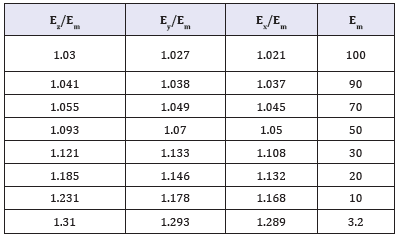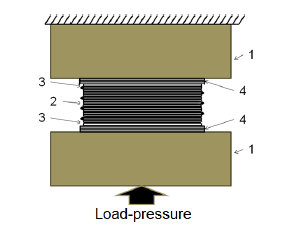- Submissions

Full Text
Evolutions in Mechanical Engineering
Effects of Carbon Nanotube Dispersion on the Material Properties of Polymer Matrix Composites
Azadeh Tavousi Tabatabaei1, Seyed Hossein Mamanpush1* and Bahareh Tavousi Tabatabaei2
1 Composite Materials and Engineering Center, Washington State University, USA
2 Department of Engineering, Islamic Azad University, Iran
*Corresponding author:Seyed Hossein Mamanpush, Composite Materials and Engineering Center, Washington State University, Pullman, WA, 99163, USA
Submission: August 01, 2018;Published: September 11, 2018

ISSN 2640-9690 Volume1 Issue3
Abstract
Carbon nanotubes (CNTs) constitute a prominent example of structural nanomaterials, with many potential applications due to their unique mechanical properties. Substantial improvements in mechanical properties of polymers have been attained through the addition of small amounts of carbon nanotubes. The way in which CNTs are distributed inside the matrix can be divided into two main categories namely: aligned and randomly distributed. Modeling of carbon nanotube dispersion in the polymer matrix is an important step for understanding the characteristics of composites. For modeling CNTs dispersion in the polymer, a numerical homogenization technique based on the finite element method (FEM) is used.
Introduction
The combination of extraordinary mechanical and physical properties makes CNTs prospective candidates for reinforcement of polymer matrix composite systems. Besides their extraordinary small size, CNTs are half as dense as aluminum, with a density of 1.33-1.4 g/cm3. CNTs have Young’s modulus of about 1TPa and tensile strength 20 times that of steel alloys. Tensile strength of single–walled carbon nanotubes (SWCNTs) is as high as 2GPa, which is much higher than that of high strength steels [1,2]. Models were developed based on the method presented in [3,4] to determine nanocomposite effective mechanical properties. the results of nanocomposite reinforced with randomly distributed nanotubes in the FEM model presented in Figure 1 and Table 1 & 2.
Table 1:Computed Young’s moduli of randomly distributed CNT-reinforced nanocomposite.

Table 2:Poisson’s ratios of randomly distributed CNTreinforced nanocomposite.

Figure 1:Schematic of the elastic interface model. A part of each component is shown.

The ratio of nanocomposite modulus to matrix modulus in the longitudinal direction, Ez/Em, is equal to 1.310 in this case for the matrix with modulus of 3.2GPa. This is about 20% lower than the uniformly distributed CNT reinforced nanocomposite longitudinal modulus [3-5]. A comparison of the results with those obtained for the uniform distribution of straight CNTs indicates that strengthening is much more homogeneous in the randomly distributed CNT case. That is, the ratios of nanocomposite longitudinal and transverse moduli to matrix modulus are close in this case (at equal Em values). These results suggest that the random distribution of the CNTs reinforces the matrix in all three directions. In fact, in case of transverse moduli, the portions of CNTs that are oriented along the x- and y-directions contribute to the nanocomposite moduli in those directions.
Figure 2:Variation of Ez/Em with matrix modulus for randomly oriented CNT-reinforced nanocomposite.

Nanocomposite longitudinal modulus decreases with increasing CNT inclination angle, thus limiting the overall effective modulus of the nanocomposite. The variation of nanocomposite longitudinal modulus to matrix modulus, Ez/Em, with matrix modulus is shown in Figure 2. Note that the ratio of nanocomposite longitudinal modulus to matrix modulus decreases as the matrix modulus increases in this case as well.
References
- Mamanpush SH, Li H, Englund K, Tabatabaei AT (2018) Recycled wind turbine blades as a feedstock for second generation composites. Waste Manag 76: 708-714.
- Shaabani A, Afshari R, Hooshmand AE, Tabatabaei AT, Hajishaabanha F (2016) Copper supported on MWCNT-guanidine acetic acid@Fe3O4:synthesis, characterization and application as a novel multi-task nanocatalyst for preparation of triazoles and bis(indolyl)methanes in water. RSC Advances 6 (22): 18113-18125.
- Mamanpush H, Golestanian H (2013) Effects of carbon nanotube dispersion on the mechanical properties of nanocomposites considering interface effect. International Journal of Current Life Sciences 4(8): 4366-4373.
- Mamanpush H, Golestanian H (2014) Investigating the effects of carbon nanotube orientation on the macroscopic stiffness of nanocomposites. International Journal of Current Life Sciences 4(4): 1168-1174.
- Mamanpush H, Golestanian H (2014) Evaluation of effective material properties of randomly distributed carbon nanotube composites considering interface effect. Indian J Sci Res 2(1): 132-142.
© 2018 Seyed Hossein Mamanpush. This is an open access article distributed under the terms of the Creative Commons Attribution License , which permits unrestricted use, distribution, and build upon your work non-commercially.
 a Creative Commons Attribution 4.0 International License. Based on a work at www.crimsonpublishers.com.
Best viewed in
a Creative Commons Attribution 4.0 International License. Based on a work at www.crimsonpublishers.com.
Best viewed in 







.jpg)






























 Editorial Board Registrations
Editorial Board Registrations Submit your Article
Submit your Article Refer a Friend
Refer a Friend Advertise With Us
Advertise With Us
.jpg)






.jpg)














.bmp)
.jpg)
.png)
.jpg)










.jpg)






.png)

.png)



.png)






